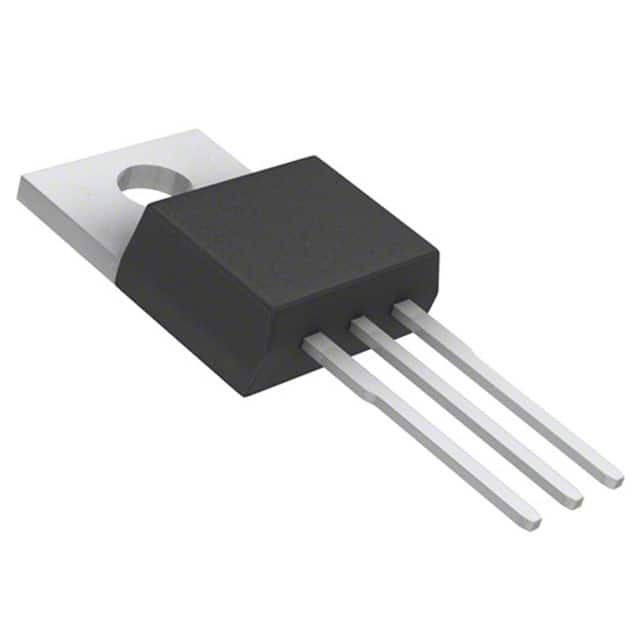Lihat spesifikasi untuk detail produk.

TIP126 Transistor:
Product Overview
The TIP126 is a high-power PNP Darlington transistor designed for general-purpose amplifier and switching applications. It falls under the category of power transistors and is commonly used in audio amplifiers, power supplies, and industrial control systems. The TIP126 is known for its high current gain, low saturation voltage, and robust packaging, making it suitable for demanding applications. It is typically available in TO-220 packaging and is sold individually or in bulk quantities.
Specifications
- Maximum Collector-Emitter Voltage: 100V
- Continuous Collector Current: 5A
- DC Current Gain (hFE): 1000 (min)
- Package Type: TO-220
- Power Dissipation: 65W
Detailed Pin Configuration
The TIP126 transistor has three pins: 1. Base (B) 2. Emitter (E) 3. Collector (C)
Functional Features
- High current gain allows for efficient amplification of weak signals.
- Low saturation voltage reduces power dissipation and heat generation.
- Robust packaging ensures reliable performance in various operating conditions.
Advantages and Disadvantages
Advantages
- High current gain enables signal amplification without significant distortion.
- Low saturation voltage results in minimal power loss during operation.
- Robust packaging provides durability and thermal performance.
Disadvantages
- Relatively higher cost compared to standard transistors.
- May require careful handling due to its sensitivity to static electricity.
Working Principles
The TIP126 operates based on the principles of amplification and switching. When a small current flows into the base terminal, it triggers a larger current flow between the collector and emitter terminals, allowing for signal amplification. In switching applications, the TIP126 can control the flow of larger currents based on the input signal received at the base terminal.
Detailed Application Field Plans
The TIP126 transistor finds extensive use in the following applications: - Audio Amplifiers: Utilized for amplifying audio signals in speakers and audio equipment. - Power Supplies: Incorporated in voltage regulators and power management circuits. - Industrial Control Systems: Used for controlling motors, relays, and other high-power devices.
Detailed and Complete Alternative Models
Some alternative models to the TIP126 include: - TIP121: Similar PNP Darlington transistor with lower current and voltage ratings. - TIP127: Complementary NPN Darlington transistor with similar characteristics.
In conclusion, the TIP126 transistor offers high-performance characteristics suitable for various amplifier and switching applications, making it a versatile component in electronic circuits.
[Word count: 366]
Sebutkan 10 pertanyaan dan jawaban umum terkait penerapan TIP126 dalam solusi teknis
Sure, here are 10 common questions and answers related to the application of TIP126 in technical solutions:
What is TIP126?
- TIP126 is a PNP Darlington transistor used for high-power applications.
What is the maximum collector current of TIP126?
- The maximum collector current of TIP126 is 5A.
What is the maximum collector-emitter voltage of TIP126?
- The maximum collector-emitter voltage of TIP126 is 100V.
What are some typical applications of TIP126?
- TIP126 is commonly used in power supply circuits, motor control, and high-power switching applications.
How do I connect TIP126 in a circuit?
- TIP126 is typically connected in a common-emitter configuration with appropriate base current limiting resistor.
What are the key characteristics of TIP126?
- Some key characteristics of TIP126 include high current gain, low saturation voltage, and high DC current gain.
Can TIP126 be used for PWM (Pulse Width Modulation) applications?
- Yes, TIP126 can be used for PWM applications due to its high current handling capability.
What are the thermal considerations when using TIP126 in a circuit?
- It's important to consider proper heat sinking for TIP126 to ensure it operates within its temperature limits.
Are there any common failure modes associated with TIP126?
- Common failure modes include overheating due to excessive current or inadequate heat dissipation.
Where can I find the detailed datasheet for TIP126?
- The detailed datasheet for TIP126 can be found on the manufacturer's website or through electronic component distributors.
These questions and answers should provide a good overview of the application of TIP126 in technical solutions.

